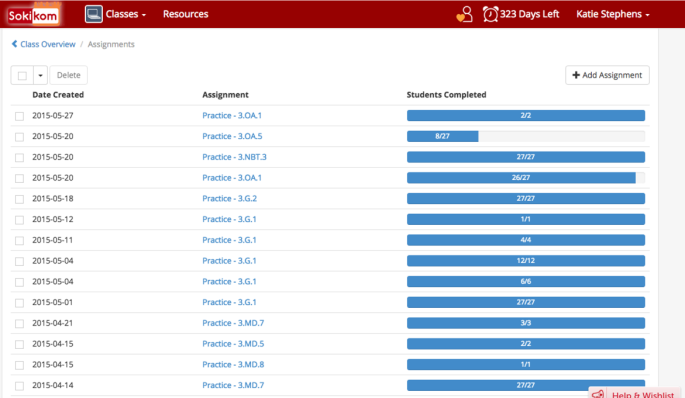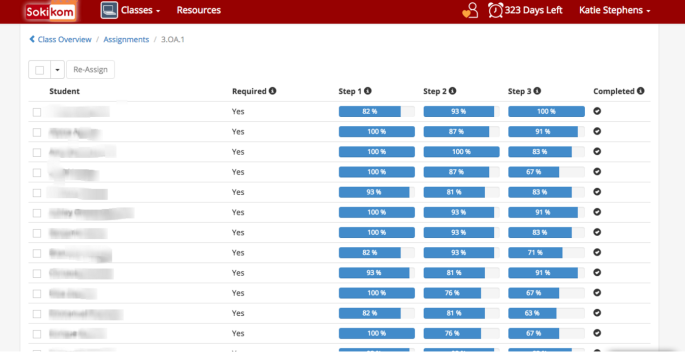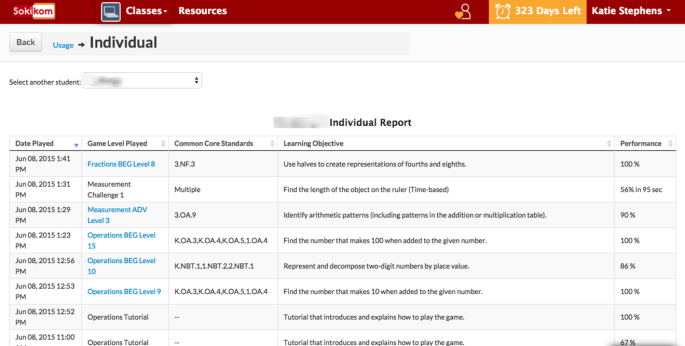By: Katie Gisler
My name is Katie Gisler and I am a kindergarten teacher at Rockford Elementary School in Porterville, California. I have been using Sokikom for three years now. The best part about my job as a kindergarten teacher is challenging myself as well as my students on a daily basis to integrate technology in a way that will be meaningful and useful to them in the future. Sokikom has not only opened doors to media literacy, but also created independent, eager learners.

Integrating Sokikom
Although my school district has a state-adopted math curriculum that I use everyday, I am able to use Sokikom as a supplement to frontload content they have not learned yet and also reiterate the concepts my students have already learned in class.
At the beginning of the year, I start using Sokikom to teach whole class math lessons. My goal is for my students to become familiar with Sokikom’s interface along with all of its awesome features before I let them navigate on their own. After they become accustomed to using it, students play Sokikom while they are in math stations. These stations are 15 minutes long and we do them three times a week.

Results
I have seen tremendous growth in my students by using Sokikom. My students are completely engaged while playing. They are not only learning math skills but also learning 21st century skills and critical thinking strategies that will then turn into lifelong skills. With today’s rapidly growing technology, media literacy is becoming increasingly important and popular for students. It is evident that students learn best when they are able to learn by experience and through observation. Sokikom allows them to do this in more than one way. Apart from the academics Sokikom offers, my students have even mastered basic computer skills such as using the trackpad to drag and drop objects. They have also become familiar with the keyboard and turning the volume up and down.

Top 5 Reasons I Love Sokikom
- Individualized learning– Students are able to work at their OWN level and pace
- Critical Thinking Skills– Student manipulate the math problem on their own to see what answer works best
- Independent learners– Sokikom lets students figure out a problem on their own. If they are struggling, the program will show them a “help” video
- CCCSS Aligned-Students are working on concepts we learn in class and apply them into their learning while playing Sokikom
- Learn by Trial and Error- If students get an answer wrong, they are not hard on themselves. They just try a different strategy they have learned in class and apply it to the game
Top 5 Reasons My Students Love Sokikom
- Interactive Gaming– The game is fun and interactive so students stay engaged
- Visually appealing– The graphics are fun and it makes it more appealing for kids of all ages
- Rewards– Students are instantly rewarded with Sokikom coins for passing levels. Then they are able to change their avatars.
- Own level-Students are working at their own level and pace.
- FUN!!- Bottom line, they love it because they don’t even realize they are doing math!








 If you click on the “Students Completed” column, you will see a more specialized report for that assignment. Below is a picture of the individual assignment report for one assignment. In this view you can see which step each student has completed and the percentage they got correctly on that part. You can also see if they have completed the assignment. In this view you can quickly see if your students understand the different parts of the assignment and standard.
If you click on the “Students Completed” column, you will see a more specialized report for that assignment. Below is a picture of the individual assignment report for one assignment. In this view you can see which step each student has completed and the percentage they got correctly on that part. You can also see if they have completed the assignment. In this view you can quickly see if your students understand the different parts of the assignment and standard.











